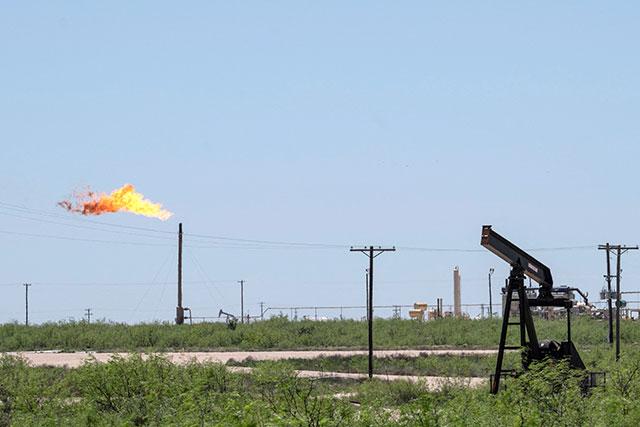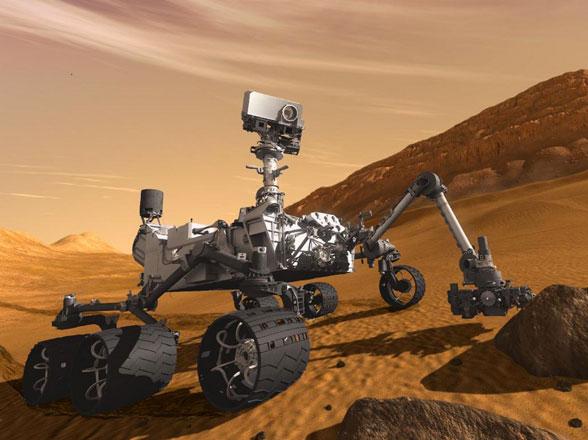You are here
Leaks account for half of major methane sources at largest US oilfield — study
By AFP - Jun 04,2021 - Last updated at Jun 04,2021

In this file photo, a flare stack is pictured next to pump jacks and other oil and gas infrastructure on April 24, 2020 near Odessa, Texas. (AFP photo)
WASHINGTON — Malfunctioning equipment accounts for about half of the biggest sources of potent greenhouse gas methane emissions at the United States' largest oilfield, a study led by NASA showed on Wednesday.
Researchers found that repairing just 123 sources found to leak most persistently in the area they surveyed using sensor-equipped planes would reduce methane emissions by 55 tons (50 metric tons) an hour.
That amount is equivalent to 5.5 per cent of the official estimate of all methane emissions from oil and gas production in the entire United States.
The Permian Basin is a shale basin about 250 miles wide and 300 miles long (about 400 by 500 kilometers), spanning parts of west Texas and southeastern New Mexico.
It produced about 4.5 million barrels of crude a day last month, according to official figures, making it the largest producing oil field in the world.
Fracking is the most common drilling method in the basin, and is linked to leaks of methane, which has about 80 times the warming potential of carbon dioxide over the first 20 years it reaches the atmosphere.
The research team, which included the University of Arizona and Arizona State University, focused their efforts on "super-emitter" sources, which release more than 22 pounds (10 kilogrammes) of methane per hour.
They calculated emission rates by combining observed methane concentrations -- detectable by air using imaging spectrometers that identify the gas by its effects on reflected sunlight -- with reported wind speeds.
The team located a total 1,756 super-emitters in a 22,000-square-mile (57,000-square-kilometre) section of the oilfield they surveyed.
Not every emission is a sign of a leak -- some are planned venting of pressure release valves.
"Multiple revisits of these sites are the best way to discriminate between unplanned and planned emissions," said Daniel Cusworth, a scientist with NASA's Jet Propulsion Laboratory and lead author of the study published in the journal Environmental Science and Technology.
Cusworth and his colleagues focused on 1,100 sources seen emitting plumes on at least three flights, and classified 123 sites as the most persistent.
The study could have practical implications: once sources are located and verified on the ground, there's a good chance the leaks can be repaired, said co-author Riley Duren of the University of Arizona.
The imaging sensors used in the study are able to pinpoint methane sources to within 15 to 30 feet (five to 10 meters) while flying at the altitude of a commercial airliner.
High-resolution cameras were then used to relate plumes to pieces of equipment on the ground such as oil and gas wells, compressors, pipelines, all of which can potentially leak.
Related Articles
TAMPA — A NASA robot has detected more building blocks for life on Mars — the most complex organic matter yet — from 3.5 billion-year-old ro
DUBAI — The United States led calls at UN climate talks on Saturday for efforts to curb methane emissions but also pushed a deeply controver
A new US space capsule, Orion, circled the Earth twice before plunging into the ocean Friday in a flawless test flight that opened a new chapter in human deep space travel.


















